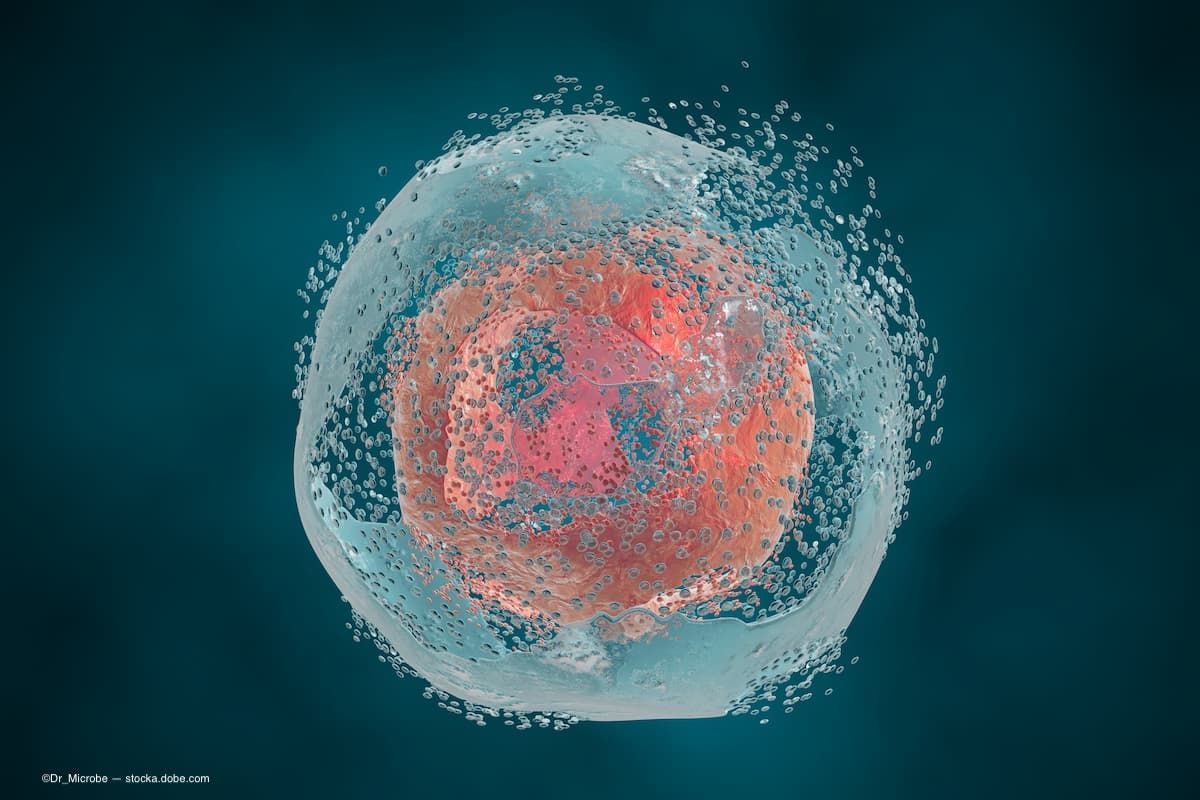News
Article
Role of ferroptosis in bacterial keratitis
Author(s):
(Image Credit: AdobeStock/Dr_Microbe)

Ferroptosis is a form of cell death that depends on the presence of iron in the cells. Chinese investigators, led by first author Qiankun Chen, MD, recently reported identifying that ferroptosis “plays a crucial role in the pathogenesis of bacterial keratitis,” and inhibiting ferroptosis is promising to reduce inflammation and corneal scarring and enhance the disease prognosis.1
Chen is from the Beijing Institute of Ophthalmology, Beijing Tongren Eye Center, Beijing Tongren Hospital, Capital Medical University, Beijing Key Laboratory of Ophthalmology and Visual Sciences, Beijing, China.
Bacterial keratitis is a vision-threatening infection that can result in severe inflammation and corneal scarring and may lead to vision loss.
Chen and colleagues explained, “The hallmark biochemical features of ferroptosis include the accumulation of iron, comprising both ferrous (Fe2+) and ferric (Fe3+) forms, and lipid peroxidation, resulting in the generation of reactive oxygen species (ROS) that induces cell death with an inflammatory component.2
In their study, the research team set out to evaluate ferroptosis-related gene expression using transcriptome analysis in human corneas with bacterial keratitis (Pseudomonas aeruginosa), and normal donor corneas.
Next, mouse models of P. aeruginosa keratitis and corneal stromal stem cells were validated. The mice were treated with levofloxacin (LEV) or levofloxacin combined with ferrostatin-1 (LEV+Fer-1). The corneal stromal stem cells were treated with lipopolysaccharide (LPS) or LPS combined with Fer-1. Reverse transcriptase polymerase chain reaction, immunostaining, and Western blot were performed to evaluate the mouse RNA for antiinflammatory cytokines, α-smooth muscle actin (α-SMA), and ferroptosis-related regulators. Iron and reactive oxygen species (ROS) were measured, the authors recounted.
The authors reported, “Transcriptome analysis revealed significant alterations in ferroptosis-related genes in human corneas with bacterial keratitis.”
The mouse models treated with LEV+Fer-1 showed reduced inflammatory cytokines, decreased corneal scarring and α-SMA expression, and lower Fe3+ compared to the BK and LEV groups. The LEV+Fer-1 group had markedly elevated glutathione peroxidase 4 (GPX4), a regulator of ferroptosis, and solute carrier family 7 member 11 (SLC7A11), an amino acid transporter that supports glutathione synthesis, in contrast to the BK and LEV group. In vitro, Fer-1 restored the changes in ROS, Fe2+, GPX4, and SLC7A11 induced by LPS in corneal stromal stem cells.
“Ferroptosis plays a crucial role in the pathogenesis of BK,” Chen and colleagues reported. By inhibiting ferroptosis, they believe that inflammation and corneal scarring can be reduced and ultimately the prognosis of bacterial keratitis can be enhanced.
The investigators also pointed out that the results provide “a potential target for innovative therapeutic strategies for bacterial keratitis, which holds immense potential to transform the treatment of the infection.”
References:
Chen Q, Wang L, Wei Y, et al. Ferroptosis as a potential therapeutic target for reducing inflammation and corneal scarring in bacterial keratitis. Invest Ophthalmol Vis Sci. 2024;65:29. doi:https://doi.org/10.1167/iovs.65.2.29
Tang D, Chen X, Kang R, Kroemer G. Ferroptosis: molecular mechanisms and health implications. Cell Res. 2021; 31:107–125.
Newsletter
Don’t miss out—get Ophthalmology Times updates on the latest clinical advancements and expert interviews, straight to your inbox.




